Last season, Liverpool won two, drew six and lost two of their games against the traditional ‘big six’, whereas this campaign, they’ve already equalled that tally of two victories in the Premier League.
Liverpool entered the international break top of the league, winning six of their first seven Premier League games, but Arne Slot insisted that the match against Chelsea would be their first real challenge.
It marked the beginning of a tough run of fixtures including games against RB Leipzig, Arsenal and Aston Villa – teams that will test Liverpool at the highest level.
The Reds emerged with a 2-1 win against Chelsea, but how did they rise to meet the tactical challenge and what might it tell us about the next few games?
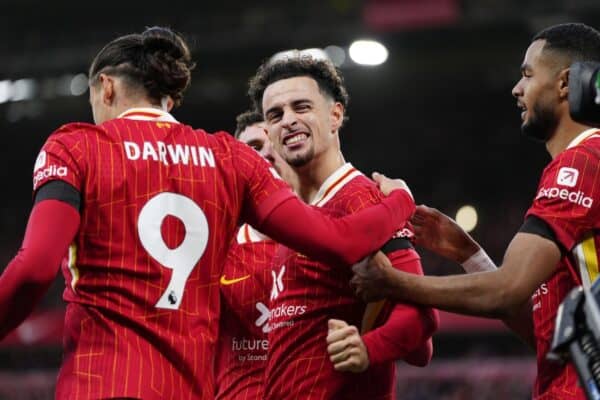

So far this season, Liverpool have typically dominated possession with most teams prioritising defence against them. Chelsea under Enzo Maresca, though, came into the game as the Premier League‘s fourth-placed team and top scorers.
They backed themselves to cause Liverpool problems with an attacking, optimistic approach.
Malo Gusto started at left back in place of the suspended Marc Cucurella but was still asked to invert into midfield. This was risky as it left Liverpool’s forwards one-on-one with the back three, but in midfield Chelsea had a four-on-three numerical advantage.


Partnering Moises Caicedo with Romeo Lavia also gave Chelsea a technically superb double pivot that could repeatedly evade pressure and win their one-on-ones if the free player wasn’t available.
As a result, the visitors could easily progress through central areas, breaking Liverpool’s press and forcing them into a compact defensive block. Once Liverpool were pinned back, Chelsea could run their preferred attacking patterns.
On the left, Gusto frequently ran forward beyond Jadon Sancho, forcing Ryan Gravenberch to track him into the last line. This not only kept Gravenberch from influencing the game in midfield, it also left Trent Alexander-Arnold one-on-one with Sancho out wide.
Neutralising Chelsea’s threat
However, this didn’t seem entirely against Liverpool’s plan for the game.
Chelsea were the league’s top scorers heading into this one, with their quality in transition helping them put four past Brighton and six beyond Wolves earlier this season.
Liverpool clearly set out to avoid fast breaks and deny Chelsea clear sights of goal.
There was a definite focus on suppressing Cole Palmer, the league’s most prolific goal threat behind Erling Haaland last season. Knowing Palmer likes to drift into the right half-space, Cody Gakpo was tasked with tracking back to support Andy Robertson at left-back.
![]()
![]()
This marked a contrast to how Liverpool used their left winger in their last big match, when Luis Diaz stayed high to exploit Man United’s attacking full-backs.
It limited Chelsea’s ability to overload Robertson, forcing them to focus on the opposite flank where Alexander-Arnold defended superbly.
Maresca even subbed on Pedro Neto at half time to go even more aggressive on the Liverpool right back, but the former Wolves man couldn’t make the difference.
Liverpool’s conservative approach extended to their in-possession work, too.
Both Gravenberch and Curtis Jones were frequently seen moving wide to receive the ball during buildup, closing off the direct ball to the wingers and forcing Liverpool to build up more slowly.
As a result, the team could stay compact and be set to defend any turnovers.
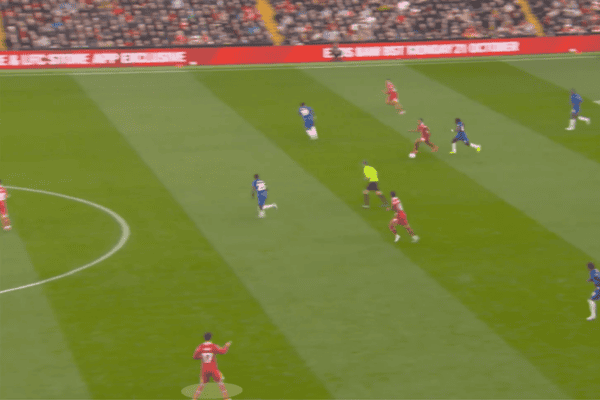

At times, however, this only served to empty the midfield and further compound Chelsea’s midfield dominance.
Finding a solution
Liverpool eventually found the weakness in Chelsea’s approach – the three-on-three situation at the back. Early signs of this came when a misplaced Chelsea pass allowed Diogo Jota to win possession, though the opportunity wasn’t fully capitalised on.
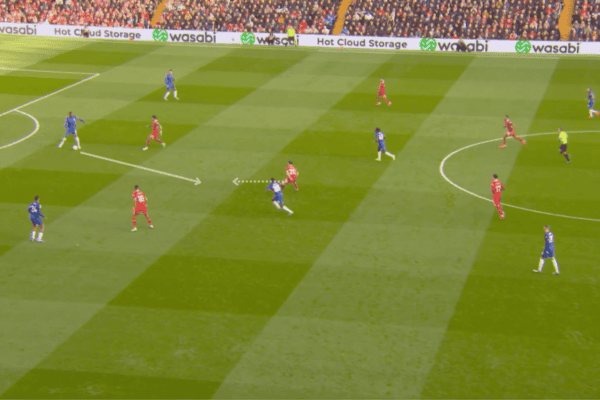

As tensions rose due to some poor decisions by referee John Brooks, the Anfield crowd cranked up the volume.
Liverpool responded by playing more directly, isolating Mohamed Salah against Levi Colwill. With Salah able to hold the ball up, his teammates could move forward and give him options in the final third.
Breaking the game down
Moments after a no-penalty call, Ibrahima Konate played direct under pressure…
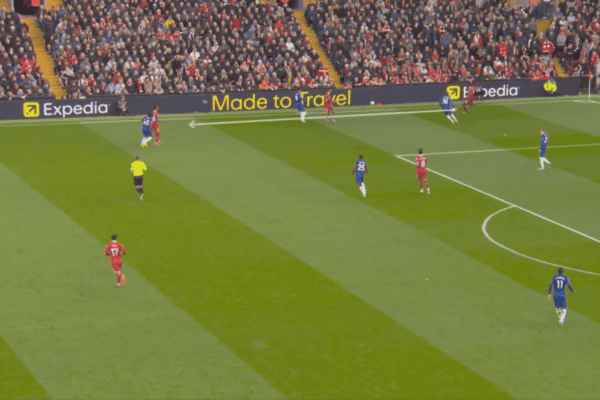

…Liverpool broke forward, Salah’s shot is deflected…
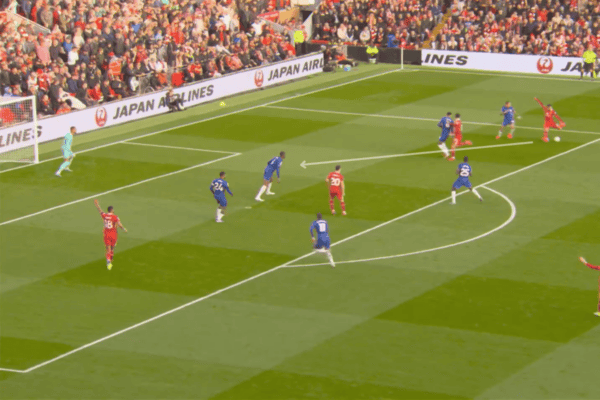

…and Jones is fouled contesting the loose ball.
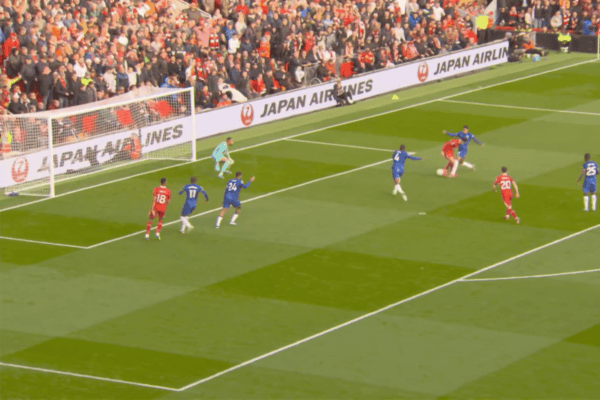

In the second half, Virgil Van Dijk played another of his direct passes through the centre…
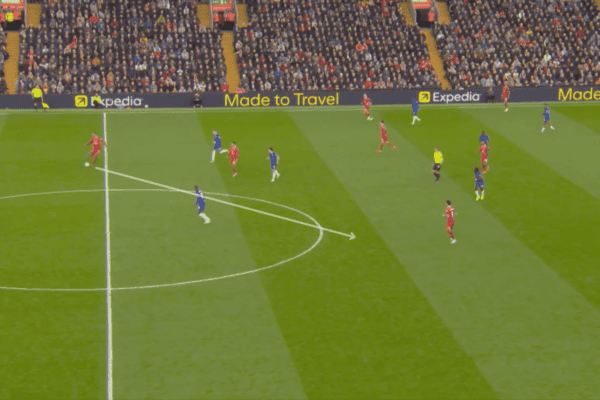

…which reaches Salah in space.
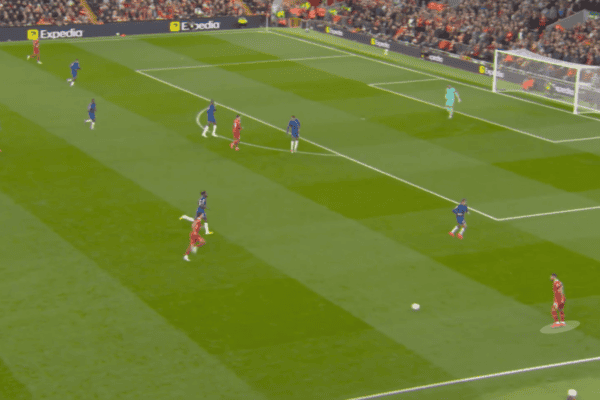

He crossed into the box where Jones’ run is not tracked…
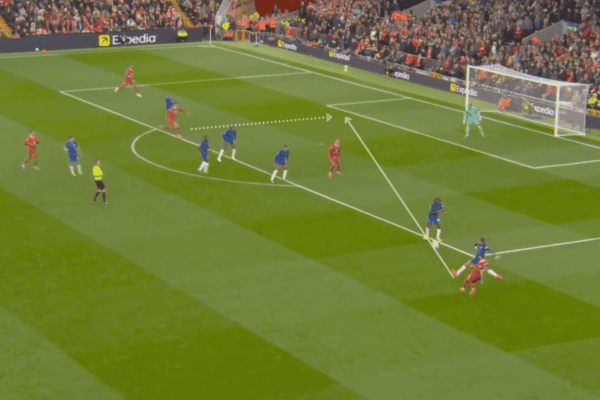

…and he finishes to win the game.
Once Liverpool took the lead, Chelsea made several changes but failed to find a way back into the game.
Despite Chelsea‘s early dominance and late push for an equaliser, they rarely threatened Caoimhin Kelleher beyond their single goal. Liverpool’s deep defence held strong, with standout performances from Alexander-Arnold, Konate and Van Dijk.
Safety first approach
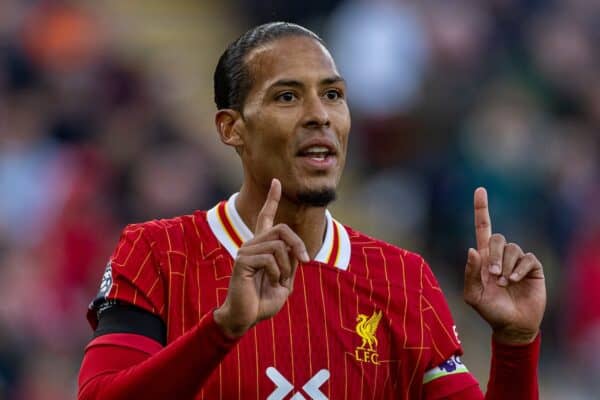

Before the season, much was made of Liverpool’s tactical shift under Slot, with increased focus on tactical intricacy.
But if Jurgen Klopp’s Liverpool was about trusting individuals – relying on the centre-backs to hold the last line alone, trusting Alisson to make crucial saves – Slot’s team is just the other side of that coin.
They stifled Chelsea’s attacks first and with the small number of chances they created themselves, the individual quality of Salah turned those chances into goals.
It is still a game of fine margins at the top, but Liverpool showed on Sunday that they want to build from a defensively solid base in the biggest games.
Time will tell if it proves successful.











